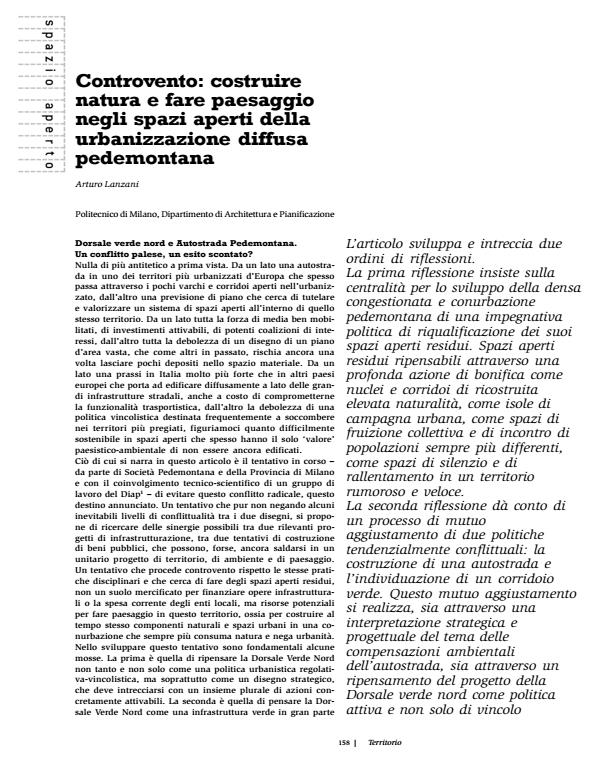Controvento: costruire natura e fare paesaggio negli spazi aperti della urbanizzazione diffusa pedemontana
Titolo Rivista TERRITORIO
Autori/Curatori Arturo Lanzani
Anno di pubblicazione 2009 Fascicolo 2008/47
Lingua Italiano Numero pagine 18 P. 158-175 Dimensione file 1412 KB
DOI 10.3280/TR2008-047018
Il DOI è il codice a barre della proprietà intellettuale: per saperne di più
clicca qui
Qui sotto puoi vedere in anteprima la prima pagina di questo articolo.
Se questo articolo ti interessa, lo puoi acquistare (e scaricare in formato pdf) seguendo le facili indicazioni per acquistare il download credit. Acquista Download Credits per scaricare questo Articolo in formato PDF

FrancoAngeli è membro della Publishers International Linking Association, Inc (PILA)associazione indipendente e non profit per facilitare (attraverso i servizi tecnologici implementati da CrossRef.org) l’accesso degli studiosi ai contenuti digitali nelle pubblicazioni professionali e scientifiche
Against the current: to construct nature and create landscape in the diffusely urbanised open spaces of the Alpine foothills - One first consideration is to insist on the centrality of a political commitment to the redevelopment of residual open spaces for the development of the densely congested conurbation of the Alpine foothills. Residual open spaces can be reconsidered through a profound action to renew them as nuclei and corridors with a high degree of reconstructed naturalness: like islands of urban countryside; like spaces for collective enjoyment and meeting places for populations that are ever more different; like places of quiet and slowness in noisy and fast communities. Open spaces which when transformed into green infrastructures and parks (agricultural, leisure and nature areas) can restore ecological balance and spread elements of ‘urbanity’ to an urbanisation which seems to present elements of crisis today because of its low level of liveability, its environmental unsustainability, its perennial congestion, its absence of any type of care for unbuilt on land, the poverty of urban places and the more general crisis of liveability (the cause of which today is now the quantity of urbanised land). A second consideration examines the process of the reciprocal adjustment of two tendentially conflicting policies: to construct a motorway and to identify a green corridor. This reciprocal adjustment occurs both through the strategic and planning interpretation of the environmental compensations of a motorway and through a rethinking of the ‘North green Dorsal’ project as an active policy and not just as a constraint.
Arturo Lanzani, Controvento: costruire natura e fare paesaggio negli spazi aperti della urbanizzazione diffusa pedemontana in "TERRITORIO" 47/2008, pp 158-175, DOI: 10.3280/TR2008-047018